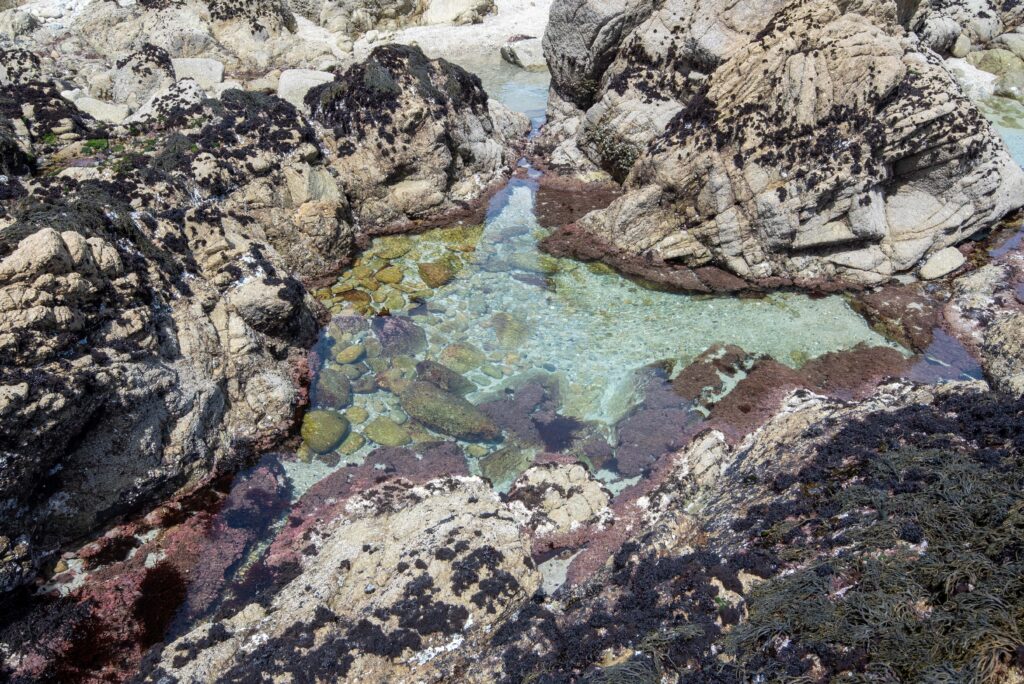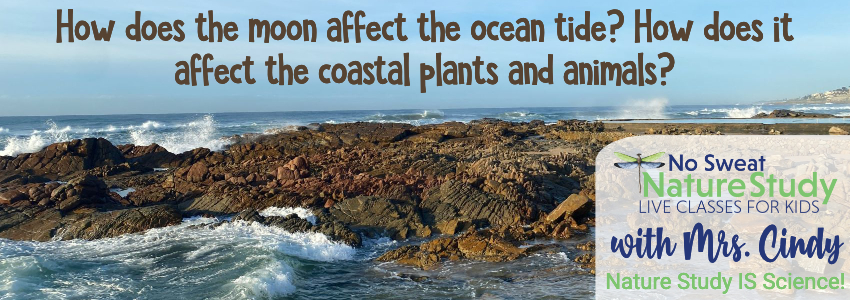What Happens to Animals When the Tide Goes Out? Nature Study
A tides nature study is a fantastic way to explore ocean science with your kids, especially when it includes fascinating tide pool animals! In this episode of the No Sweat Nature Study Podcast, children learn what happens when the tide goes out and discover how creatures like sea stars, crabs, and anemones survive in ever-changing beach conditions.
Whether your family has visited the coast or just dreams of the ocean, this short and engaging lesson brings the wonders of tide pools and marine life right to your homeschool or classroom. With relatable science, big vocabulary, and a splash of curiosity, it’s the perfect addition to summer learning or a seaside unit study.
Tides Nature Study
Use these questions to chat with your children after listening to the episode. They’re perfect for reviewing science concepts and sparking a fun discussion.
- What is the name of the small puddles left behind when the ocean water pulls away? (Tide pools)
- Why do some ocean animals get stuck in tide pools? (Because they live near the shore and stay in place when the tide goes out)
- What is the tide? (The regular rise and fall of ocean water on the shore)
- Name three animals that might live in a tide pool. (Sea stars, crabs, sea anemones, small fish, mussels, or barnacles)
- How do animals in tide pools protect themselves when the water disappears? (Some close their shells, some hide under rocks, and others cling tightly to surfaces)
- What challenges do tide pool animals face when the tide is out? (Changes in temperature, saltiness, and oxygen levels)
- What body part helps sea stars cling to rocks? (Tube feet)
- If you could visit a tide pool, what animal would you hope to find and why? (Open-ended conversation starter)

Tides Nature Study Video Class
In the upcoming No Sweat Nature Study video class about tides, children will learn exactly what causes the ocean to rise and fall each day. Through engaging explanations and visuals, they’ll discover how the moon’s gravitational pull creates high and low tides, how often tides change, and what that means for coastal environments around the world.
The class also explores the intertidal zone, where land and sea meet, and how plants and animals adapt to the challenges of living in such a constantly changing environment. As always, children will create a nature journal page to solidify their learning, this time diagramming the tidal cycle.

Free Nature Observation Printable Packet for All Seasons
The No Sweat Nature Study Podcast community has been sharing recommendations of excellent nature-themed books. Click here to find a compilation of listener favorites!
Would you like to record a voicemail to answer this season’s nature study question?
At the end of each No Sweat Nature Study Podcast episode, Mrs. Cindy includes messages from a few of her friends. You can record a message that she might use on an upcoming episode!
All children must have their parents’ permission before leaving a recording. Parents are welcome to record an answer, too!
Each season, there will be a different question to answer. You can see this season’s question below. Think about your answer first, and then follow these simple directions:
- Click the “Start recording” button.
- Tell me your first name. (If you want to tell your age and/or where you live, feel free to do that.)
- You will have 60 seconds to answer the question, but try to be concise.
- Push the play button to listen to your recording before sending it, to ensure it is recorded correctly. If not, record it again.
Please leave a rating or a review on your podcast app! It helps the podcast to show up for more people…which means more families can enjoy science through the wonderful lens of nature study! Thank you!
